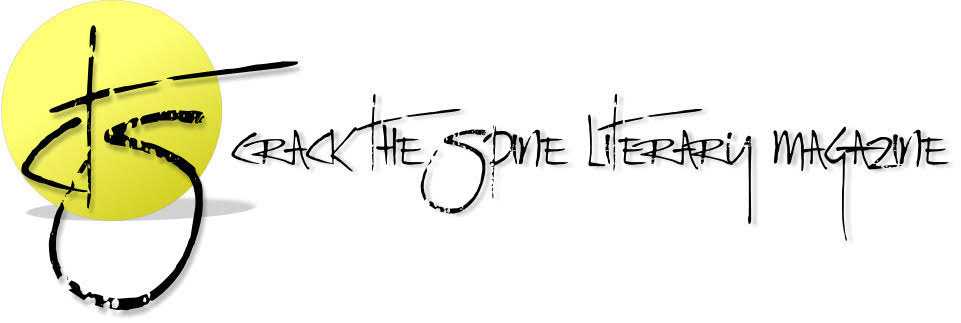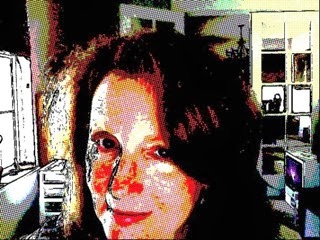Lia Woodall
Denver, Co
JD, Loyola Law School, LA; BS, Arizona State University
The Writer
How long have you been writing?
I’ve been taking workshop classes at Lighthouse Writers Workshop in Denver since fall of 2007. Started out in short story, but I couldn’t keep my memoir voice out of my fiction so I moved over to creative nonfiction workshops in 2008.
What do you consider to be your greatest accomplishment as a writer?
Contributing to a larger conversation in a community I’ve grown to love and feel more competent in.
What is your ultimate goal as a writer?
I guess I’ve finally decided I have a book in me, maybe even two, on the memoir side. After I exhaust those projects, I want to return to the short story form that I enjoy reading so much.
What is your greatest challenge as a writer?
Knowing when the piece feels done. There is always something more that could be discovered.
The Work
Tell us about your work in Crack the Spine.
‘In Fallout: A Response to The Fourth State of Matter,” I share one of my favorite essays by reading it to my husband in bed one night. I’m trying to blend my writing world with my marriage and, in real time, capture the experience I’m having as I’m reading. Will this very specific story touch a universal nerve in him, in us? We lived a few miles from Columbine when it happened so we watched a lot of the Fallout from that violent tragedy, including a mother’s suicide six months later. I feel lots of connections to Jo Ann Beard’s story, but ultimately, whatever story I’m trying to write circles back to my twin’s suicide, even when I’m not trying to. Here it shows up in just one line, like a ghost in our bed.
What inspired “In Fallout?”
This piece was inspired by the Experimental/Hybrid Forms class I was taking at the time at Lighthouse taught by Richard Froude. (Beth Nelson from Issue 87 was in that class, too.) The class was set up to encourage conversation, conversation with published works and with each others’ work in whatever form we wanted. I didn’t know I would write this essay as a result of inviting my husband into that conversation, but Fallout wrote itself as I was reading to my husband.
How long did it take you to complete this piece?
The next morning, I sat down at my desk and my response spilled out of me very quickly. I named it Fallout after I’d finished it. The impact of Beard’s essay will always resonate with me just as Columbine, just as my twin’s suicide. There will always be damage from those experiences, more than we know.
Tell us about another project you have published or are currently working on.
My first essay, “Torn in Two” was published in October in South Loop Review: Creative Nonfiction + Art (Vol. 15). Yep, it’s about losing my twin to suicide. Another essay called “The Scream” will be published this spring in Sonora Review. I’d always felt this scream inside me after Larry killed himself and 22 years later I figure out what to do with it.
The Methods
How often do you write?
I’m a binge writer, with lots of stewing of images and voices and ironies beforehand. Often I need to find two or three threads that can be juxtaposed in fragments to write the story that’s hard to tell.
Where do you write?
I can write almost anywhere, but I do love my narrow, wood, one-drawer desk that I bought from a friend leaving Wichita for San Fran in the early 80s. We worked together in the legal department of Koch Industries. I quit a month later. Glad we both got out of there when we did.
What is your best piece of advice on how to stay sane as a writer?
I write mostly memoir pieces about losing my twin brother to suicide. It’s a dark and insane place to visit so realizing that writing is a process of creating art, often through point of view and voice and different forms, helps me to stay sane. My experiences and memories aren’t so much badges or trophies or scars as they are containers and sculptures I get to fill and shape on the page. They have a place in my life, like art in my home. I can embrace them, admire them from afar, put them on a shelf, light them up, dust them off, move them to a darker corner, knowing all the while that they are small parts of me, not all of me.
The Madness
What is your favorite book?
“To Kill a Mockingbird.”
Who is your favorite author?
Currently, Joan Didion and Nick Flynn.
What is your favorite word?
Bewilderment—I often write from a state of it.
Who would play you in the film of your life?
That’s easy. Julianne Moore. A couple times a year, people I’ve just met will say, “Does anyone ever tell you, you look like Julianne Moore?” (Wishing!) The last time was the new dental hygienist but I couldn’t respond.
What’s in that cup on your desk?
Black coffee. Sometimes Scotch if I want to transport myself emotionally to . . . . I had my first Scotch with a dear friend after being robbed by gunpoint—cocked and pressed against my forehead—in Mexico City, my first time outside the US. I begged for US dollars at the PanAm ticket counter so we could pay the exit tax to leave Mexico and get to Nicaragua. We had just enough change left over to share a Scotch.
Beach or Mountains? Beach
Cats or Dogs?
Cats
Thanks so much to Lia for participating in our interview series and for giving us some insight on how she approaches the craft of writing!


I love this passage: “My experiences and memories aren’t so much badges or trophies or scars as they are containers and sculptures I get to fill and shape on the page. They have a place in my life, like art in my home.” I feel after reading a work of art by Lia Woodall that I, too, have a new sculpture–a new piece of art–to place in my collection, something that begins to reshape my life and continues to affect me well into the future.
Torn in two was wonderful. By the way, I think this site can be helpful: favoritewords.com, I am new to it but I believe it has a great potential to move forward in the future as a new wave in social networking.